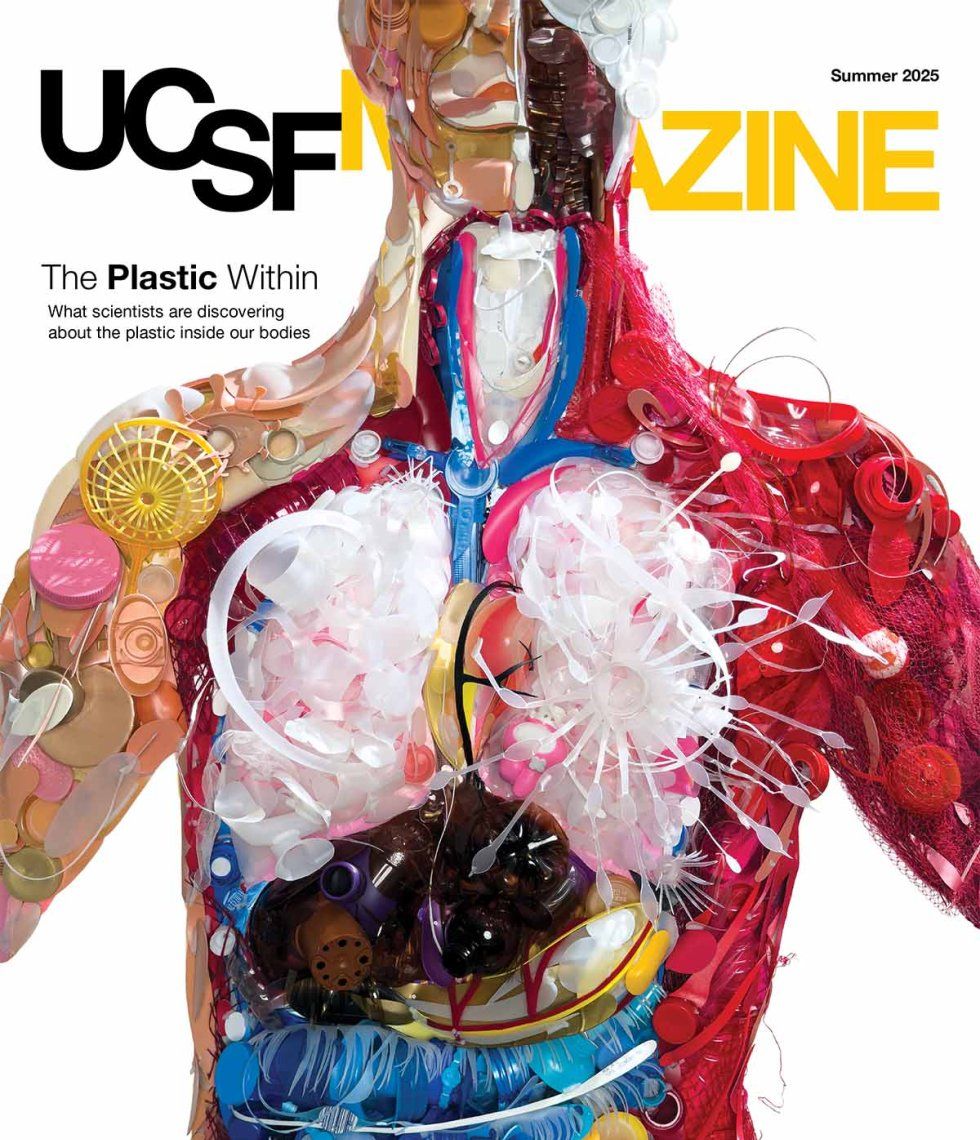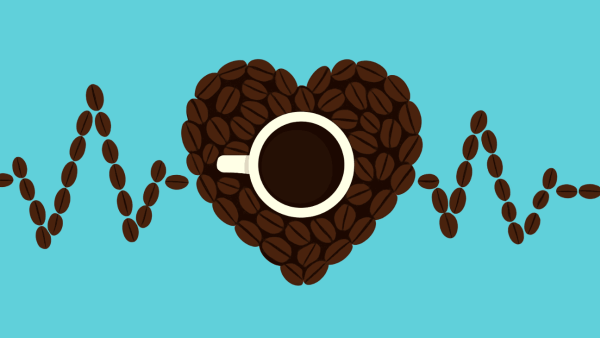
How Does Marijuana Affect Our Bodies?
UCSF experts shed light on persistent cannabis myths.
Animation: Farah Hamade
Marijuana has been a hot topic for years, but one often clouded by misperceptions. Many turn to it as a perceived panacea, hoping it will address health issues or enhance their well-being if other options have fallen short. But what scientists are learning about weed’s health effects might come as a surprise.
Myth #1
Marijuana smoke isn’t as bad for me as cigarette smoke.
Although research studies on marijuana lag behind those on tobacco, smoke is still smoke, and it’s never beneficial. Breathing any smoke can lead to cardiovascular disease or exacerbate respiratory conditions like asthma, say UCSF experts.
“There’s a misconception that marijuana, being more ‘natural’ than highly processed cigarettes from tobacco companies, produces smoke that is less toxic,” says Matthew Springer, PhD, a professor of cardiology. “But that’s not the case. It’s nasty stuff, with benzene, formaldehyde, and heavy metals you don’t want to be exposed to, among many other substances.”
Myth #2
Edibles are safer than smoking marijuana.
“There’s a mythology, popularized by the comedians Cheech and Chong in the 1970s, that marijuana is a benign product that doesn’t cause significant intoxication. That’s unrealistic today, with commercialized cannabis,” says Laura Schmidt, PhD, MSW, MPH, a professor of health policy studies.
“We’ve never had cannabis this potent or abundant. We’ve never had cannabis commercialized or packaged like food. Many cannabis edible products mimic junk food. Bright colors, cartoon characters. They’ll just change the name: Molly Ranchers versus Jolly Ranchers,” she says.
Edibles, while lung-sparing, pose their own health harms, especially for the impatient. People who smoke marijuana feel the effects fast, so they know when they’ve had enough. But edibles take half an hour or more for the effects to kick in.
“Someone will take an edible and five minutes later they’ll say, ‘I don’t feel it – I’m going to take more,’ and end up taking way too much. They rush to the emergency room with panic, palpitations, and nonstop vomiting,” Springer says.
Myth #3
Marijuana isn’t going to harm me long-term.
Even in less traumatic situations, experts are finding connections between marijuana and cardiovascular disease. UCSF research shows that marijuana interferes with the proper functioning of blood vessels and affects endothelial cells, which line blood vessels and are crucial for healthy circulation.
Using cannabis makes a 30-year-old’s blood vessels resemble those of a 60-year-old.”
In UCSF's CANDIDE study, Leila Mohammadi, MD, PhD, lead clinical investigator, found that chronic cannabis smokers had similar vascular functional defects to those of chronic tobacco smokers, including poorly functioning arteries, and blood serum that inhibited important properties of cultured endothelial cells (the inner lining of blood vessels). Endothelial dysfunction is an early warning sign of cardiovascular conditions like hypertension and atherosclerosis.
The study has also found that people who didn’t smoke anything but did use marijuana edibles also had problems with their arteries; however, their blood didn’t cause the same damage to lab-grown endothelial cells, suggesting that smoking and edibles affect blood vessel function in different ways.
“Using cannabis makes a 30-year-old’s blood vessels resemble those of a 60-year-old,” Mohammadi says.
Myth #4
Marijuana can’t hurt me since I’m young.
Our brains continue developing until about age 25, says William Burrough, MD, MPH, an assistant professor of pediatrics. It’s one reason why substance use hits adolescents differently than adults.
“IQ tests are lower in people who use marijuana heavily, particularly during adolescence. Studies using brain scans have shown teenagers who frequently use cannabis have reduced brain matter and activity in the areas crucial for decision making and planning,” he explains.
Fortunately, the brain is adaptable throughout life, Burrough adds. “While repeated cannabis use during adolescence can cause long-lasting changes, stopping or reducing it can lead to recovery and improvement in brain function. The body’s ability to heal is remarkable.”
Myth #5
I can’t overdose on marijuana.
Marijuana doesn’t impact the body the way fentanyl and other opioids do, but people can become so intoxicated from it that they experience anxiety, paranoia, hallucinations, and sometimes psychosis, Burrough says.
“Anyone can be affected by substance use, but if you have a family member who has schizophrenia or psychosis, it can be particularly risky,” he says.
Myth #6
I can use marijuana to self-medicate.
“Many people are drawn to marijuana because it’s easily accessible, and they can control how they use it,” says Suzaynn Schick, PhD ’01, an associate professor of occupational, environmental, and climate medicine. “If you’ve had bad experiences with Western medicine, that’s appealing. I hear a lot of magical thinking around marijuana, often from people who feel they don’t have better, safer alternatives.”
I hear a lot of magical thinking around marijuana, often from people who feel they don’t have better, safer alternatives.”
Nhung Nguyen, PhD, PharmD, an assistant professor of general internal medicine, explains that although people may use cannabis to deal with health concerns like depression or anxiety, we still don’t have clear evidence to support the presumed benefits. “It’s hard to make conclusions about the effects without standardized product regulation.”
Springer says research on the purported benefits of marijuana for medicinal purposes is an emerging and evolving field. But, he adds, “clearly, if a cancer patient can’t keep food down, can’t take oral drugs, and feels awful, and this is what makes them feel better, then to me that’s a beneficial use.”
Burrough believes we could all benefit from being less dismissive about each other’s points of view on pot. “These conversations get so caught up in people’s personal feelings. There are legal, recreational, and medicinal aspects. It’s a nuanced topic – never all or nothing,” he says. “Maybe cannabis isn’t as harmful as some other potential substances. At the same time, using it too often can lead to real harm. Ideally, I’d want people to talk to their doctor about their use.”
Myth #7
I can’t talk to my doctor about marijuana.
Some people may fear they’ll be stigmatized or shamed when talking to a provider about marijuana, but many clinicians are open to these discussions, says Meredith Meacham, PhD, MPH, an assistant professor of psychiatry and behavioral sciences. “They try to have nonjudgmental, open-ended conversations. They’ll ask permission of a patient, like, ‘Is it OK if we talk about cannabis? Tell me about your use. What do you like or not like about it?’”
If patients are debating between using marijuana or taking a drug for depression, for example, says Burrough, “I tell them we have strong evidence from randomized controlled trials showing which antidepressant medications are effective for moderate to severe depression and anxiety. We know what’s in them. They are regulated and monitored.”
Myth #8
I can quit anytime.
Quitting marijuana isn’t always as easy as people think – especially for heavy users. Those who use cannabis daily may try to stop but, within a day or two, experience heightened anxiety, disrupted sleep, and poor appetite. If that’s happening, check with your provider – it’s a sign you may have developed a cannabis use disorder.
Treatment options can include behavioral therapies to better understand triggers and teach alternative coping skills, medications to treat uncomfortable symptoms, or interventions to address underlying or co-occurring conditions like anxiety or depression.
“Many things can be addictive – shopping, gambling, even social media,” says Burrough. “Addiction happens when you lose control over that thing, when it’s impacting your daily life in negative ways. The good news is, there are ways we can help. Like many treatment plans in medicine, it’s often a combination of options, catered to your goals, that leads to success.”




